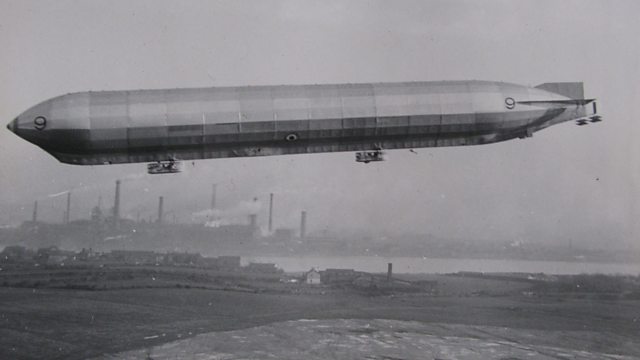Walney Island, Cumbria: Britain鈥檚 Response to German Zeppelins
The birthplace of war airships that were a force to be reckoned with
It was in Barrow that the engineering genius Barnes Wallis, famous for developing the bouncing bomb in World War Two, developed cutting edge technology in a race to design airships to match the German Zeppelins.
After the disaster of rigid airship R1 before World War One - which was aptly named the 'Mayfly' - when it broke its back on its maiden voyage, government enthusiasm for airships cooled. But with the Zeppelin bombing raids terrorising the UK population and threatening industry, in 1912 it was decided Britain needed its own fleet of airships.
Wallis flourished in the new Vickers design department, and he employed the lessons learned from before the war, and those gleaned from crashed Zeppelins, to build airships that surpassed them.
On Walney Island, close to Barrow, a giant airship shed and a hydrogen gas plant was built to house the huge structures.
In quick succession the H.M.A. R.9 and R.23 left the drawing board, but his design masterpiece was the supremely elegant R. 80, whose construction required over 600 drawings, 1.6 million individual parts, 20 miles of special duralumin girders and 53 miles of wire.
Towards the end of the war the stress of non-stop work put the young Wallis in a nursing home in London for a couple of months to recover. But the Armistice brought an end to airship construction at Barrow as fixed wing aircraft had proven themselves to be the future of powered flight.
Following the war, the giant hangar built on Walney to house the airships was demolished after attempts to use it as a film studio came to nothing.
Location: Walney Island, Barrow-in-Furness LA14 3YQ
Image of a Barrow airship
Photograph courtesy of Nigel Cayley
Duration:
This clip is from
Featured in...
![]()
Pioneers—World War One At 主播大秀
The brains behind the breakthroughs
![]()
主播大秀 Radio Cumbria—World War One At 主播大秀
Places in Cumbria that tell a story of World War One
![]()
Technology—World War One At 主播大秀
Wartime pioneers and innovation
More clips from World War One At 主播大秀
-
![]()
The loss of HMY Iolaire
Duration: 18:52
-
![]()
Scotland, Slamannan and the Argylls
Duration: 07:55
-
![]()
Scotland Museum of Edinburgh mourning dress
Duration: 06:17
-
![]()
Scotland Montrose 'GI Brides'
Duration: 06:41







